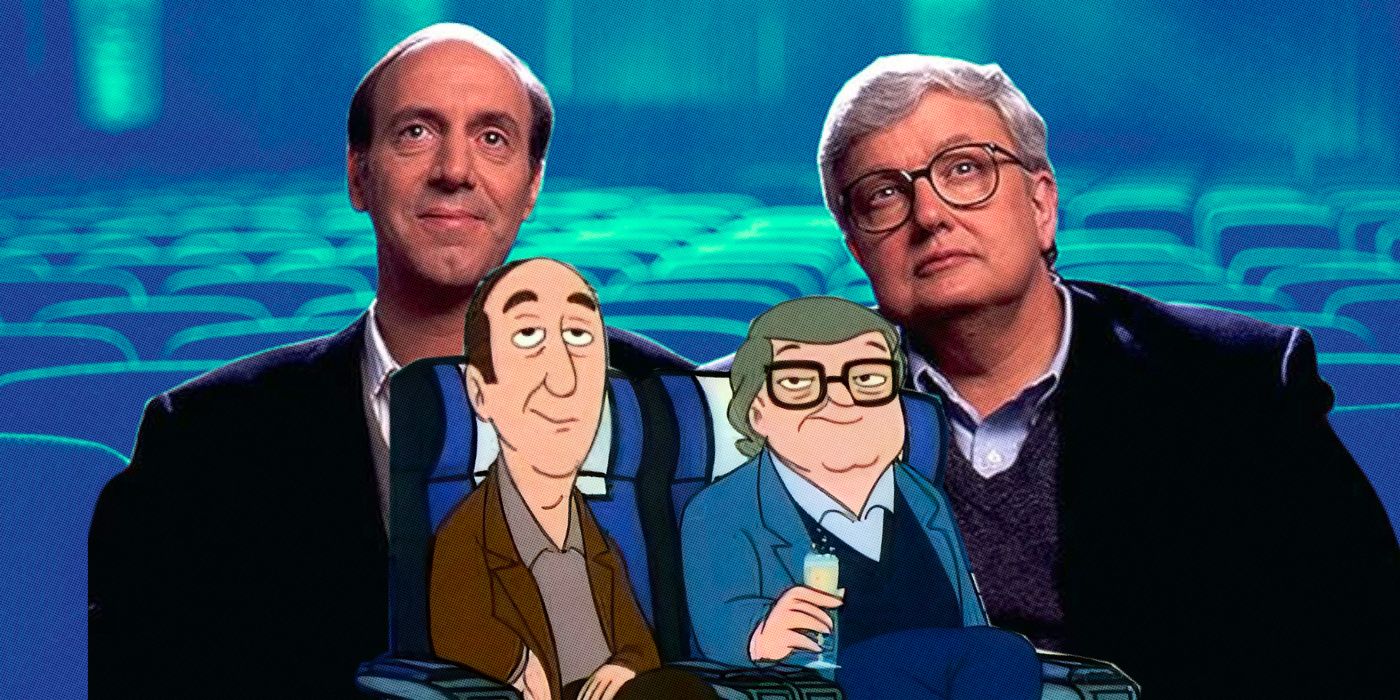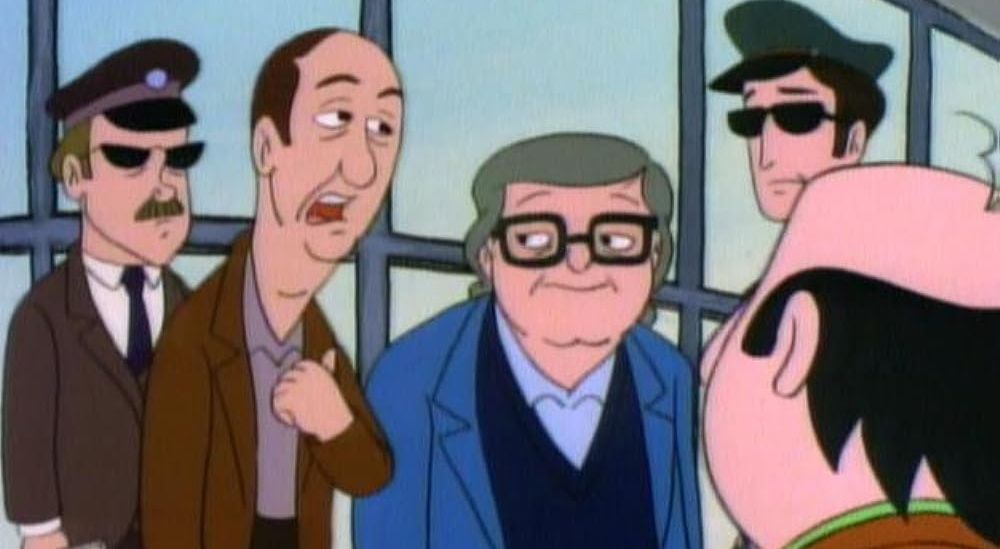The Big Picture
- Gene Siskel and Roger Ebert turned down offers to appear in TV and movies, but made an exception for the animated show The Critic.
- The Critic was intended to be the anti-Simpsons, with protagonist Jay Sherman being an unabashed elitist and snob, unlike Homer Simpson.
- Siskel and Ebert reviewed the first three episodes of The Critic and suggested focusing on developing the characters in the studio that Jay worked with.
There are no two film critics as well-known as Gene Siskel and Roger Ebert. The famed hosts of At the Movies spent over twenty years together reviewing movies, advocating upcoming filmmakers, and making their own picks for the winners of the Academy Awards. They appeared on talk shows, reviewed an episode of Saturday Night Live as it was happening, and were once parodied by name in 1998’s American take on Godzilla. They would turn down offers to appear in TV and movies themselves, citing a conflict of interest. In the mid-90s however, there was one exception: an animated program with ties to The Simpsons in which they were offered the chance to sing: the aptly titled cartoon The Critic.
‘The Critic’ Is Basically a Spinoff of ‘The Simpsons’
After two years of show-running The Simpsons, writers Al Jean and Mike Reiss began developing their own shows. The first, at the request of Matt Groening, was a Krusty the Clown spinoff (per Riess’s memoir, The Springfield Confidential.) The spinoff moved Krusty to New York, made him a single father, and gave him co-workers with eccentric personalities. When Groening passed on the spinoff, the duo retooled those elements into an original idea about a morning news show and sought Jon Lovitz to play the show’s film critic. When Lovitz couldn’t commit to the full-time schedule the show would need, Jean and Reiss decided to make it animated and centered it on the Lovitz film critic character. Thus, The Critic was born.
As Nathan Rabin detailed in his retrospective review, The Critic was intended to be the anti-Simpsons. Not so much in that would be a drama, but Jean and Reiss wanted to distinguish their creation by making its star Jay Sherman as different from Homer Simpson as possible. To quote Rabin, “Where Homer is a booze-sodden everyman, Jay Sherman is an unabashed elitist. Where Homer is a rudely physical creature, Jay leads a life of the mind. Homer is a slob. Jay is a snob.” The Critic also relied on watercolor imagery for its backgrounds and used a Gershwin-inspired musical intro for its theme song.
The Critic was also a workplace comedy with frequent appearances by Australian movie star Jeremy Hawke (Maurice LaMarche), never far from a cigarette make-up artist Dorris Grossman (Dorris Grau), and maniacal billionaire Duke Phillips (Charles Napier). The Critic lasted two seasons despite a boost from an infamous crossover with The Simpsons that Matt Groening removed his name from. Fortunately, before its preemptive cancelation, Jay Sherman had the chance to work with the legendary film critics Siskel and Ebert in a Season 2 episode entitled “Siskel & Ebert & Jay & Alice.”
As previously referenced, Siskel and Ebert turned down offers to appear as themselves for fear it wouldn’t be right as evaluators of the medium. Perhaps they felt their ethics didn’t come into play so much with The Critic since they already reviewed it. Siskel and Ebert reviewed the first three episodes of The Critic and gave it a mixed response. While both liked it to some degree, they felt its unique story of focusing on a film critic is what the show should double down on, and that it should avoid matters of Jay’s family and personal life and focus on developing the characters in the studio that Jay worked with. But the two loved the movie parodies and wished the show success in finding its foot. The two even jokingly suggest lending stories from their own experiences to the writers’ rooms should it be requested. Little did they know what Jean and Reiss would ask of them come Season 2.
‘The Critic’ Honored Roger Ebert and Gene Siskel’s Friendship
In “Siskel & Ebert & Jay & Alice,” Jay Sherman is set to attend the Academy Awards for a musical number honoring film critics including him, Gene Shalit, Rex Reed, and Siskel and Ebert. On a flight back from Los Angeles, after reviewing the in-flight movie (a sequel to Rain Man entitled Snow Man), Siskel and Ebert’s disagreement turns into a fistfight and leads to them going their separate ways. The split provides Jay Sherman the opportunity to potentially be one of the two critics’ new partners. But when Siskel tries to make Jay look like Ebert, and Ebert can’t stop calling Jay “Gene,” Jay realizes the two are meant to be together and teams up with his assistant-turned-love interest Alice to reunite the film-commentating duo. But not before Siskel and Ebert sing a mournful tune about it.
After failed attempts to make it work with Jay, both Siskel and Ebert go to their moonlit balconies and pour out their emotions in the form of a downbeat song. While neither of the critics could really sing, together their performance brings out a lot of heart despite the premise being a silly moment. There is an added bit of weight from their guest appearance as well, and their reunion in the following scene. While part of the fun of Siskel and Ebert’s personalities was their jabs at each other, their contemptuous relationship eventually did develop into a meaningful relationship (expertly documented in The Ringer’s narrative podcast series Gene & Roger by film writer Brian Raftery).
Sadly The Critic was just finding its groove when it was canceled, and the Siskel and Ebert episode is certainly a high point. Both series creators Al Jean and Mike Reiss cite this episode as one of their favorite of the series. That said, the episode doesn’t end without the two critics critiquing it, calling out the ending that brought them together for what it was: a parody of Sleepless in Seattle. While the show was a cartoon whose main goal was to entertain, having the real-life critics portray themselves is one of the few times they publicly revealed their affection for one another. As comical as it is, it now serves as a sweet testament to the two critics’ bickering friendship that has shaped so much of film criticism.
Denial of responsibility! TechCodex is an automatic aggregator of the all world’s media. In each content, the hyperlink to the primary source is specified. All trademarks belong to their rightful owners, and all materials to their authors. For any complaint, please reach us at – [email protected]. We will take necessary action within 24 hours.
Khushi Patel is a science fiction author who lives in Austin, Texas. She has published three novels, and her work has been praised for its originality and imagination. Khushi is a graduate of Rice University, and she has worked as a software engineer. She is a member of the Science Fiction Writers of America, and her books have been nominated for several awards.



